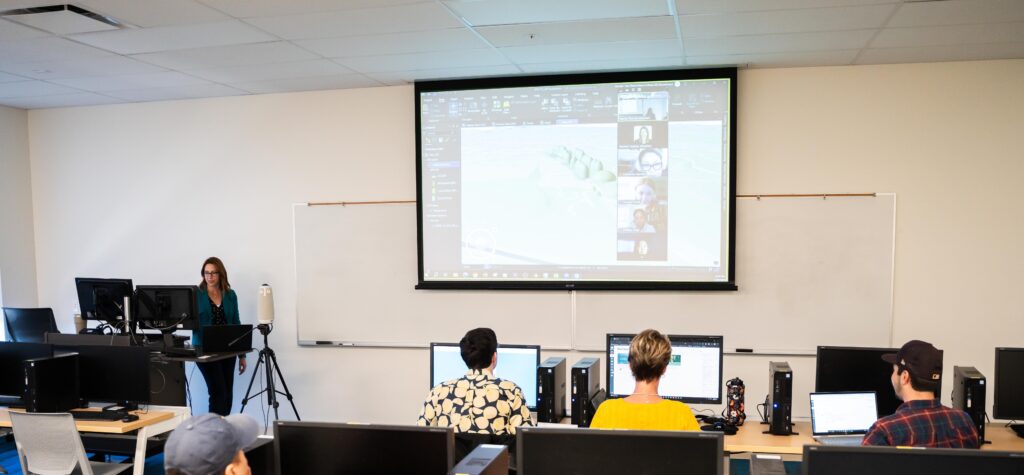
An elementary student reads a book to himself during class.
Credit: Allison Shelley for American Education
California’s recent NAEP report card showing our fourth- and eighth-grade students performing below pre-pandemic levels in reading is an urgent wake-up call.
As California considers how best to support literacy improvement, one area we need to get right is approving curriculum materials based on evidence, not convenience.
Unfortunately, one of the main resources states rely on for this is EdReports, an independent nonprofit whose evaluations many states and districts turn to when choosing a commercial curriculum.
On the surface, this may seem like an efficient and convenient solution.
However, EdReports, which was launched in 2015 to help districts identify instructional materials aligned to the then-newly adopted Common Core State Standards (CCSS), has long been out of sync with the body of scientific research about effective reading instruction, particularly in the earliest grades. Instead, it has used as its framework the Common Core Standards, which do not robustly address the importance of early foundational reading skills.
In 2024, journalist Linda Jacobson of The 74 Million published the article “Critics Call ‘Consumer Reports’ of School Curriculum Slow to Adapt to the Science of Reading,” and Natalie Wexler highlighted flawed rubrics, lack of rater reliability and overstuffed textbooks that contain “a lot of time-wasting fluff” in her Forbes article “Literacy Experts Say Some EdReports Ratings Are Misleading.” These articles illuminate the underlying problems with EdReports’ methodologies. To date, EdReports has evaluated curricula against a subset of the Common Core State Standards and its own internally developed criteria — not against scientific research and not including any focus on English learners.
Concerns about this misalignment are not new. More than four years ago, Louisa Moats, a nationally recognized expert on reading instruction, warned about flaws in the Common Core standards for young students:
“There is so much in the Common Core State Standards that just doesn’t square with how the majority of children learn to read. For instance, there are incorrect assumptions made about pacing, some of which are simply wrong and others that reflect the needs of only a fraction of students in any given classroom.
“Unfortunately, some of the people who led the development of the CCSS were more well-versed in research pertaining to middle and high school and didn’t have a strong grasp of beginning reading instruction. They didn’t understand the complexities of teaching young children to read. They didn’t know all the data about the pace of learning, the individual differences kids bring, and the sheer volume of practice that most children need to consolidate reading skills.”
As a result, reviews on EdReports frequently promote curricula that experts have widely criticized for not being effective at teaching reading, while giving lower ratings to some that have been shown to improve literacy.
Despite these underlying flaws in its methodology, many state education agencies continue to rely heavily on the convenience of EdReports reviews to create “approved lists” of curricula. EdReports’ sphere of influence has grown to include other websites, such as the California Curriculum Collaborative (CalCurriculum), which provides guidance to California school districts on adopting and implementing instructional materials based on EdReports and using the same problematic and outdated evaluation criteria.
Notably, many of the states that have shown the most improvement in reading — including Louisiana and Tennessee — did not rely on EdReports and instead used their own process for selecting curricula.
On Jan. 28, EdReports announced an update to its English language arts (ELA) evaluation criteria, claiming a shift toward alignment with the science of reading. However, given EdReports’ influence, this change is too little too late. For years, EdReports did not prioritize this research, meaning all its previous reviews — still available on its website — are based on criteria not centered on evidence-based research.
This raises a crucial concern for California as we may be on the precipice of recommending new English language arts/English language development materials along with a new comprehensive state literacy plan and literacy road map. If we rely on EdReports’ past recommendations, we risk adopting materials that do not align with the best available research on how children learn to read and how to ensure their learning sticks.
Fortunately, there is a strong, evidence-based alternative: The Curriculum Navigation Reports created by The Reading League, a national nonprofit organization dedicated to advancing the awareness, understanding and use of evidence-aligned reading instruction.
These reports, using criteria reviewed by experts for reliability and validity (the consistency and accuracy of a measure), evaluate curricula through the lens of scientifically based research, not the Common Core standards. These reports serve as informational educational resources for curriculum decision-makers to identify aligned practices within their curricula as well as opportunities to strengthen reading instruction. The Reading League also provides Curriculum Evaluation Guidelines and a Review Workbook that schools and districts can use if they wish to review materials on their own. Finally, literacy leaders can seek guidance and support from their state chapters of The Reading League (of which California has one), which are composed of researchers, educators, parents, and other stakeholders committed to using research to guide literacy instruction.
Curriculum providers are invited and encouraged to submit their programs for evaluation in a Curriculum Navigation Report; it is noteworthy that several companies that fared well on their EdReports reviews declined to submit their programs to The Reading League.
Good policy is only as effective as the tools used to implement it. As California determines its next steps in literacy policy, we should follow the example of those states that have developed comprehensive plans and vetted curriculum lists based on rigorous, evidence-based criteria. We must also heed the cautionary tale from other states’ experiences and avoid making decisions driven by convenience or influenced by outdated, inaccurate standards. The quick adoption of materials reviewed by EdReports or its derivatives, such as CalCurriculum, may seem like an attractive shortcut, but the result would shortchange California students.
We urge California’s education leaders to do the necessary work: Vet curriculum materials based on the established scientific research on reading instruction. The future of our students’ literacy — and their lifelong learning — depends on it.
•••
Linda Diamond is author of the Teaching Reading Sourcebook and executive director of the Evidence Advocacy Center, a clearinghouse to connect states, districts, schools, higher education institutions, and parent advocates to trustworthy resources that are proven to have an impact.
The opinions expressed in this commentary represent those of the author. EdSource welcomes commentaries representing diverse points of view. If you would like to submit a commentary, please review our guidelines and contact us.


